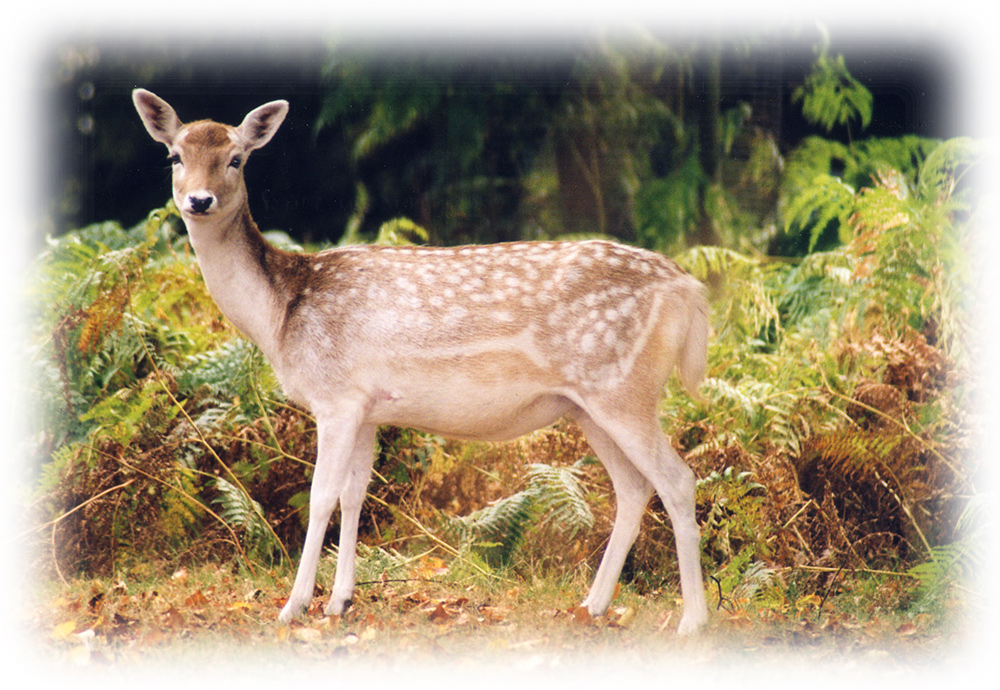Introduction
The aim of this guide is to highlight features of the biology and behaviour of Fallow deer (Dama dama) as an aid to the management of the species, it is not a complete description of Fallow deer ecology (see Further information below). Deer behaviour is not fixed, they will adapt their behaviour to local circumstances, sometimes behaving quite differently from one area to another or over time. This guide links to Deer Biology, Deer Behaviour and Deer Signs guides which should be considered as important associated reading.
Social structure
Herding deer. Size of herds depends on habitat type/quality, deer density, degree of disturbance and time of year. Large herds may be the result of high deer densities, continual disturbance, animals gathering on a food source or prolonged hard weather. Sexes usually segregated for most of the year but in some habitats may mix freely throughout. Bucks and does will move into traditional rutting stands as the rut approaches. Within groups the bucks have a hierarchy loosely based on age, size and aggression, doe herds are often led by a dominant older female. Fawns are dependent on their dams until 3-4 months but may suckle for longer. Female fawns tend to remain with their dam and her group, young bucks disperse after a year or so to join bachelor groups.

Patterns of activity
Use of Habitat
Prefer diverse woodland habitats such as large areas of woodland which are near to arable or pasture land. Fallow like to have areas of dense cover in which to lay up and will often adopt quiet areas as “sanctuaries” where they can remain undisturbed. Bucks will often be seen sitting out in arable crops pre-harvest.
Within the same landscape some fallow may be strongly hefted to one area while others roam more widely. Herds can be fairly static but will often tend to have one or more favoured “core areas” between which they move (often at night and sometimes over several miles) on an irregular basis. The boundaries of core areas may be very clear cut with fallow being present in one area and almost entirely absent just a mile away. Within a core area there is often daily movement from lying up areas to feeding places, the route is often the same but can change quickly due to disturbance. If undisturbed they may be seen on their preferred grazing areas (usually grassland) during the day but often use open areas at night. All of these factors make fallow unpredictable and it may be difficult to locate a herd at any particular time.
Where herds (especially does) are strongly hefted to an area the responsibility for controlling deer impacts in the wider area may fall largely to the individual landowners on whose ground the deer reside.
Bucks tend to disperse more widely than does, making them more prone to road accidents and opportunistic culling which can lead to the bucks being severely reduced in number.
Fallow deer movement is affected by time of day, season and weather, some knowledge of how they respond will make them easier to predict, see Deer Behaviour guide.
Feeding
Primarily grazers but can be selective in what they eat. Fallow often use open areas to graze but will spend long periods browsing in woodlands especially where there is a lot of bramble or during a good tree mast year. Maximum browse height is approx 1.6m
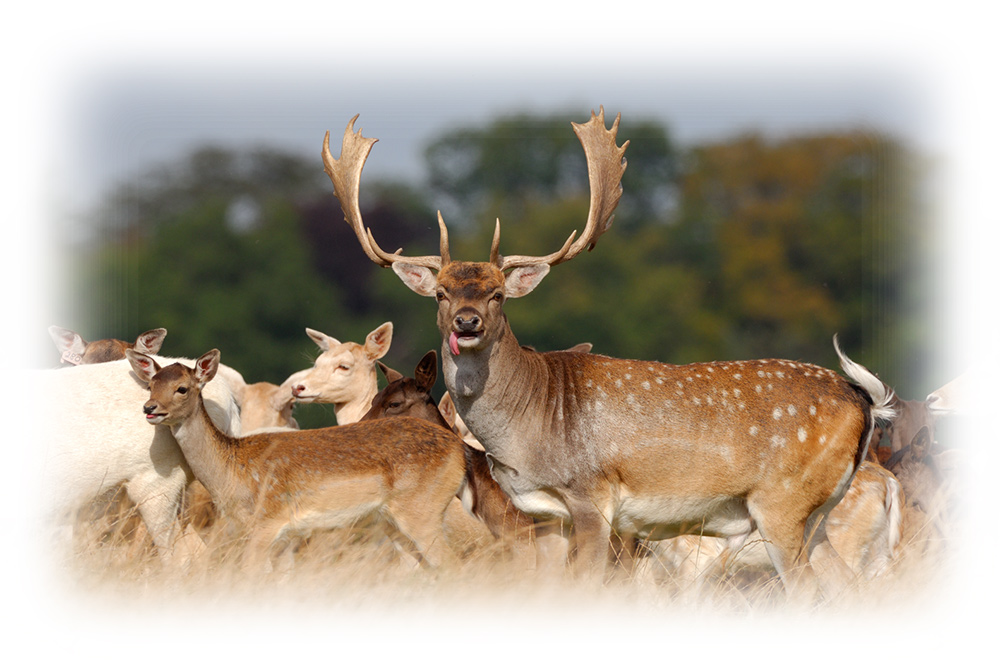
Breeding
Females are polyoestrous (will come into season repeatedly if they do not conceive at first). This may result in occasional births as late as September rather than June/July. Adult doe pregnancy rate is often 90% or more. Does produce a single fawn every year over a breeding life of 10 years or more. Late middle aged does are generally larger and may produce heavier, earlier fawns. Twin fawns have been recorded but does will occasionally suckle young from other does making it appear that they have twins. Does may conceive as yearlings but pregnancy rates are lower ( up to 60-70%). Rarely, doe fawns may become pregnant. In both cases their fawn may be born very late because it’s mother may have reached the minimum conception weight after the main rut.
Rut in Oct/Nov, bucks often creating rutting stands in traditional areas to which the does are attracted. Where bucks congregate to rut this is known as a “lek”. Alternatively bucks may search out doe groups and mate opportunistically. Actively rutting bucks cease feeding through the rut and may have difficulty recovering fully during the winter. Embryo development begins immediately. By December it is easy to confirm pregnancy in culled does, although the embryo may not be apparent until January for late mated does. Survival rates of fawns can be very good, usually 50-90%, lowest in very wet Summers or where deer densities are high. Survival rates improve if high density populations are reduced below habitat carrying capacity ( see Cull Planning guide). Most does cease lactation by December but some may continue into February.
Fallow are very variable in colour: similarly coloured parents will not necessarily have the same coloured offspring.
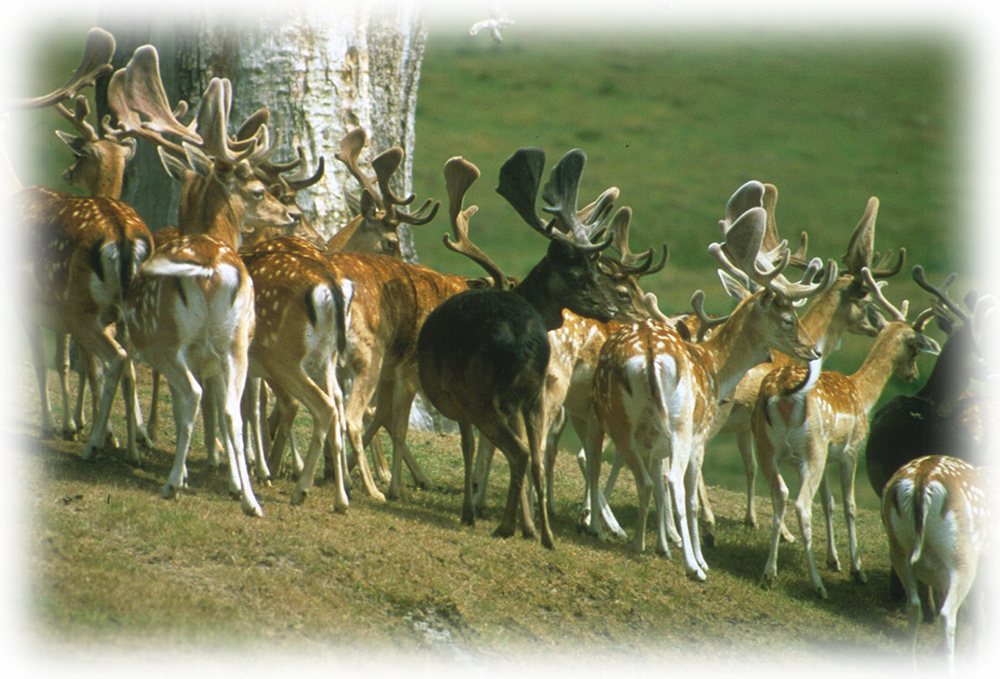
Distinguishing sex and age
Sex
Penile tuft/brush is easy to see in males, even in fawns. Females have a tuft just below the vulva but it is usually hidden by the long tail. Adult males are larger than females and antlers are usually obvious except in yearling bucks(prickets). Where they occur together (mostly in parks) it is possible to confuse some colour varieties of female fallow with female sika.
Age
Straightforward to age fallow into the four broad age classes, fawn, yearling, adult, old. Older fallow tend to be stockier and broader across the back. Older does have longer faces. Spot patterns in fallow are unique to individuals but this is not particularly useful in the field.
Deciduous third pre-molar is lost at around 19-22 months. Full adult dentition is achieved by 26-30 months although the last cusp of the third molar may not come into wear until 36 months (see ageing by teeth guide). Most wild fallow are younger than 12 years.
Size and form of antlers is some indicator of age in fallow, prickets (yearlings) having simple spikes or knobs. Brow and trey tines typically develop in the second head (sorels) and palmation begins at some time then or later. The antlers of very old bucks may decline in size. In general the pedicles will be shorter on older bucks.
Condition
Condition Coat change is normally April/June and Sept/Oct (youngest first). Antlers are cast from April-May (oldest first)and become clean from August. Very late antler growth or coat change may be an indicator of poor health. Fallow often carry tick and ked burdens. Fallow fawns may not do well in wet summers or very cold winters. Rutting bucks can lose a great deal of condition and may find it hard to regain weight because the rut finishes late in the year. The peak of winter mortality occurs in early spring, survival rates increase after the spring flush of vegetation.
Culling
One of the more difficult deer species to cull as they can be somewhat unpredictable, moving over very large areas and rapidly changing their behaviour in response to disturbance. Fallow can become almost wholly nocturnal making culling during the day much harder.
Because they are herding animals care is needed when shooting to avoid injuring others in a group.
Very variable in colour which makes detection of animals that are not immediately apparent more difficult.
Often be found in wide open spaces, this can make them easier to see but sometimes harder to approach.
Usually culled using a combination of stalking and sitting out (high seats and other vantage points), mainly in the early mornings and late evenings although in mid winter fallow may be on the move at all times of day. Moving fallow to static rifles can also be productive (see Moving Deer guide).
When culling does, the welfare of their fawns must be taken into account. Culling does without young avoids the issue, but these are likely to be a minority of those that have to be culled. Where possible dependent fawns should be culled before or immediately after their dams, especially early in the season before the fawns become more independent. If a dependent fawn is unintentionally orphaned strenuous efforts should be made to cull it. If this is not possible immediately, the fawn will normally be found with the herd later and should be culled then if it shows signs of deterioration. If the doe and fawn were alone, the fawn will often return to the shot doe within the hour. Later in the season orphaned fawns are far more likely to do well but, if practical, you should continue to cull fawns with their dams. Fawns in poor condition should normally be culled as a matter of course.
For culling large herds on a landscape scale some general principles apply:
- keeping the herd as settled as possible is key to success, fallow quickly become unpredictable when disturbed.
- try to leave some areas where the deer feel safe (usually where they lay up), but not at the expense of creating “sanctuaries” where numbers are allowed to get out of control, thus affecting the outlying areas. Early in the season try to shoot only when the deer are in transit rather than where they lay up or feed. as the season progresses this principle may have to be abandoned.
- especially early in the season concentrate on isolated family groups, preferably on the boundaries and away from resting areas, this reduces the risk of disturbing large numbers of deer at once and increases the chance of culling fawns/yearlings with their dam.
it sometimes pays to try to get the more awkward animals first, leaving the easier ones till later, this applies both to the harder to get at groups and to the flightier animals within a group. - by preference tackle larger herds later in the season. Having fired the first shot(s) do not chase the herd just to get one more, leave them to settle.
it is wise not to always stalk the same areas and in the same way, or too frequently.
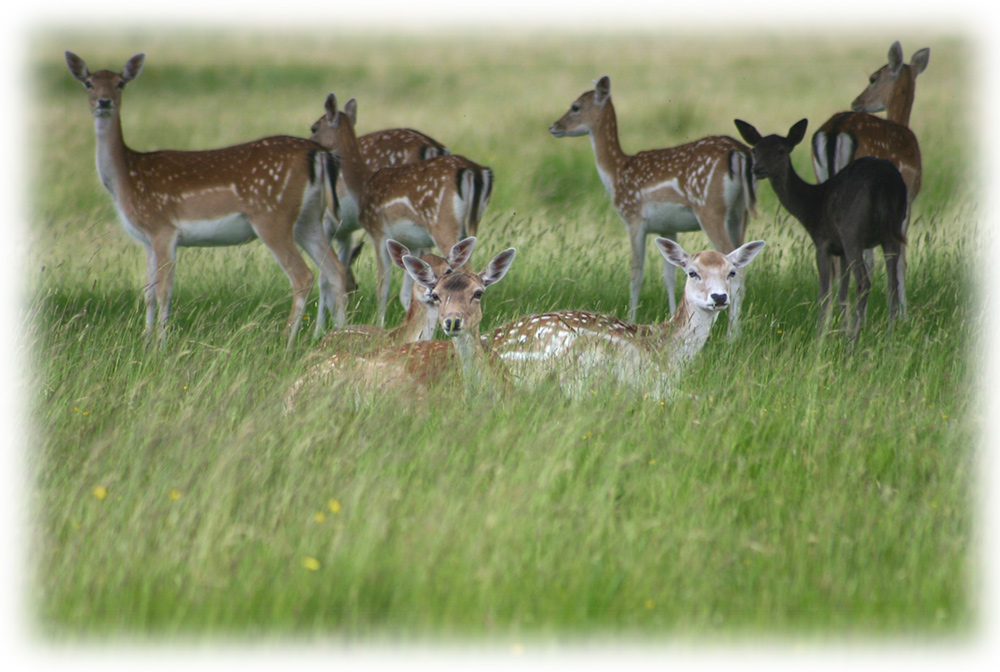
does with fawns, in summer coat
When disturbed, a herd may leave en-masse and may not return for long periods. Such behaviour often takes them across man-made boundaries and out of an individual stalkers influence. It is usually more efficient to approach Fallow management on a landscape scale by cooperating across boundaries (See Cross boundary Liaison guide).
Fallow does may become more visible as the winter progresses but the doe herd will become more and more wise to being culled. It may require ever changing tactics on the part of the stalker to maintain the pace of the cull.
It may be tempting to call/shoot bucks on their traditional rutting stands but this can have the effect of putting too high a selective pressure on the adult bucks and disrupting the normal behaviour of the does just as their season opens. Sometimes young bucks can be culled on the periphery of the rut without undue disturbance.
The venison of bucks in rutting condition becomes “tainted” by their scent. By preference take bucks early in the season, well before the rut, or when the bulk of the does have been culled.
The culling seasons for does (1 Nov – 28 Feb) and bucks (1 Sept – 31 Dec) overlap but it is important when trying to achieve the female cull, that bucks are not accepted as a substitute to “make up numbers”. Dependent buck fawns may have to be culled for humane reasons and potentially make up a substantial part of the buck cull, thus relieving culling pressure on the older bucks.
It is important to cull sufficient females to prevent over population, Fallow does can produce 10 fawns or more over a lifetime. Culls of 20% of the female population may be required just to keep many populations stable. See Census and Cull Planning guides.
In many herds there is a preponderance of females, with apparent ratios of as few as 1 buck to 10 does, this is partly because survival rates are lower in bucks. Such low adult buck:doe ratios will not prevent does from becoming pregnant as yearling bucks and even buck fawns can be sexually active in the absence of competition, in such cases the proportion of does in the cull will have to be even higher.
There is often concern about apparently low numbers of mature bucks in fallow populations, good cooperation across boundaries should help to ensure that these bucks are not culled too heavily. In general the quality of antlers will be best when overall numbers are lower and where restraint is exercised when culling bucks.
In good habitats adult carcass weights (skin on, head and feet off ) should average around 35kg for does and between 40kg and 70kgfor bucks depending on age.
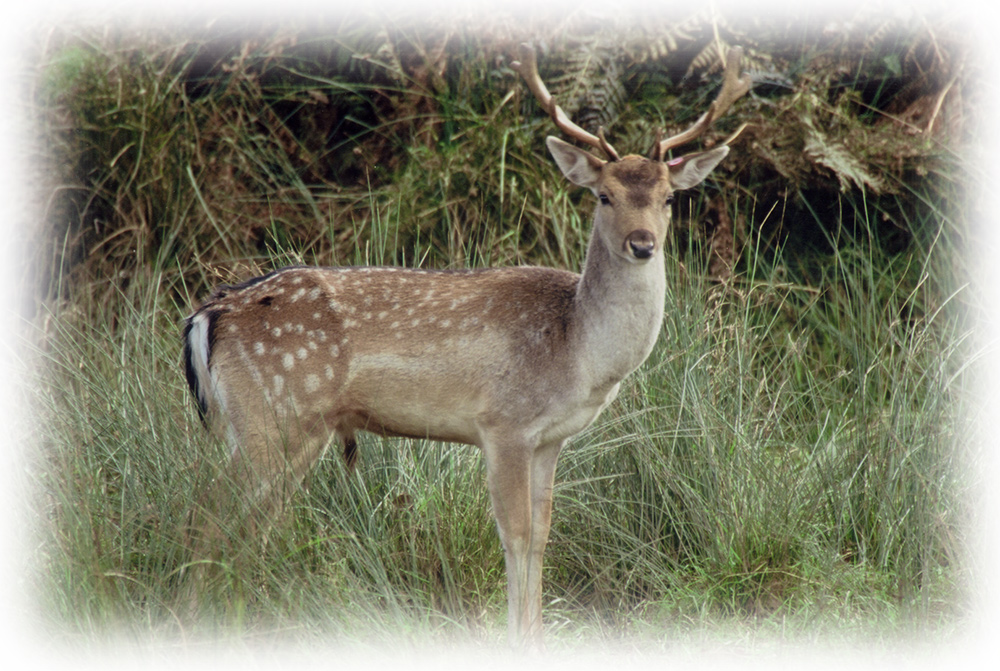
penile tuft is obvious in male, young common coloured buck coming into winter coat
Damage
The most significant impact is caused by grazing and browsing. In woodland grazing/browsing may adversely affect woodland regeneration, damage commercial tree plantings, and affect the structure and composition of the understory. Acceptable grazing levels will depend on site specific circumstances and objectives.
At high densities or in conditions of stress, fallow will bark strip (particularly soft barked trees such as Ash).
Well known for making tracks through, and sitting in, standing cereal crops, which can open crops out to wind-blow. Bucks may cause serious damage by fraying and thrashing trees and shrubs, especially in areas where they are resident and during the rut.
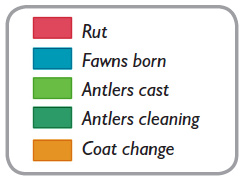
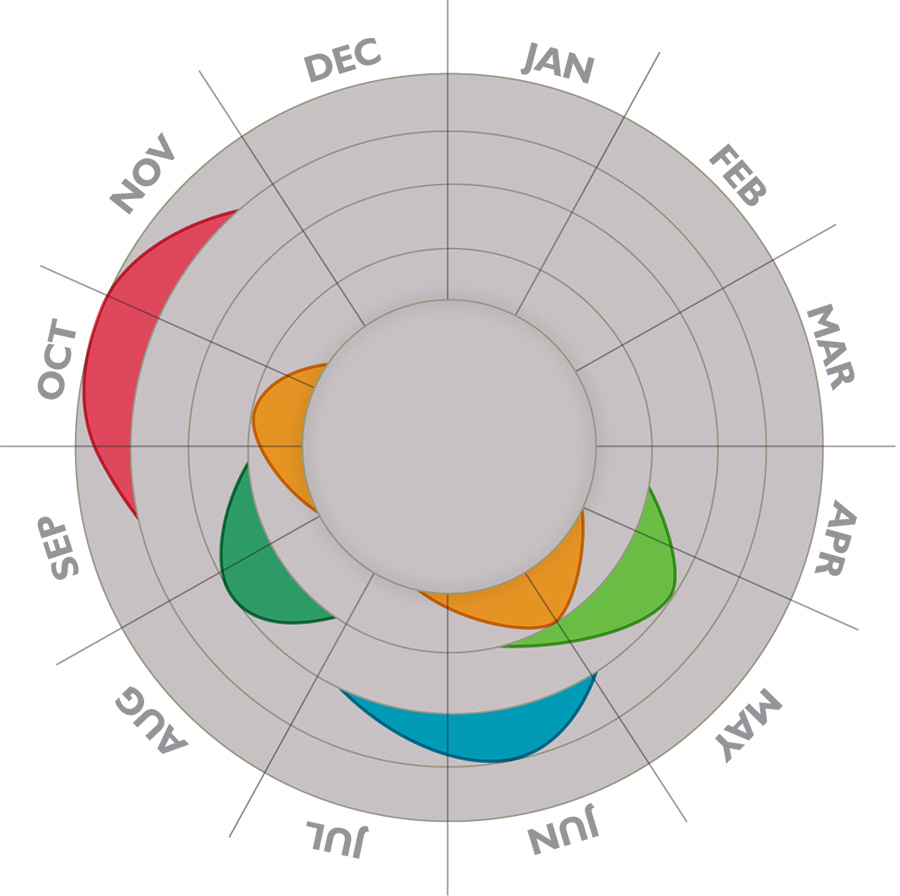
Further Info
Prior, R. (2007) Deer Watch. 2nd Ed
British Deer Society, Deer Identification sheet
Chapman, D. Chapman, N. (1997) Fallow Deer: Their History, Distribution and Biology
Chapman, N. (1984) Fallow Deer. Mammal Society Series)
Langbein, J. Chapman, N. (2003) Fallow deer British Deer Soc/Mammal Soc.
[printfriendly]
